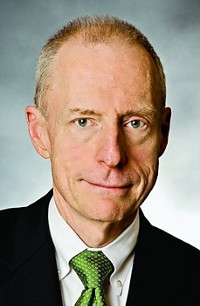Advertisement
Grab your lab coat. Let's get started
Welcome!
Welcome!
Create an account below to get 6 C&EN articles per month, receive newsletters and more - all free.
It seems this is your first time logging in online. Please enter the following information to continue.
As an ACS member you automatically get access to this site. All we need is few more details to create your reading experience.
Not you? Sign in with a different account.
Not you? Sign in with a different account.
ERROR 1
ERROR 1
ERROR 2
ERROR 2
ERROR 2
ERROR 2
ERROR 2
Password and Confirm password must match.
If you have an ACS member number, please enter it here so we can link this account to your membership. (optional)
ERROR 2
ACS values your privacy. By submitting your information, you are gaining access to C&EN and subscribing to our weekly newsletter. We use the information you provide to make your reading experience better, and we will never sell your data to third party members.
Environment
Transformational Chemistry
February 9, 2009
| A version of this story appeared in
Volume 87, Issue 6
IN HIS INAUGURAL address, President Barack Obama has called for science to be restored to its rightful place. I believe that chemistry should be at the vanguard of this transformation, and no organization is better positioned to lead this effort than the American Chemical Society.
I applaud ACS President Thomas Lane, who has laid out an agenda for the chemical enterprise that includes many steps to restore chemistry to its pinnacle (C&EN, Jan. 5, page 2). The National Research Council's "Sustainability in the Chemical Industry: Grand Challenges and Research Needs—A Workshop Report" provides the detailed road map for how to achieve this.
We practitioners of green chemistry have seen the transforming power of this discipline. It can be seen in the eyes of elementary school children who learn that chemistry can be fun, important to society, safe for them, and safe for the environment. Capturing the imagination of this K–12 generation of students in a way that directs them to careers in science, as many of my generation were captured by President Kennedy's challenge to America to "put a man on the moon and return him safely," is the best way to ensure the sustainability of our discipline.
It can be seen when college students attend the ACS green chemistry workshop prior to each annual Green Chemistry & Engineering Conference in June or the ACS Green Chemistry summer school later in the summer. With increasing intensity, these students are raising their voices to say, "We want more of this kind of chemistry." A response that includes more emphasis on teaching green chemistry and engineering principles is, I believe, the best way to guarantee that the emerging workforce is well prepared for the 2 million-plus green jobs that our reinvented economy promises.
We need more chemists and engineers schooled in the principles of green chemistry and engineering, whether these graduates enter academia, industry, the government, or nongovernmental organizations (NGOs). This new understanding of chemistry and engineering might just be the glue that cements the new relationships that Lane has described. To those ACS members working in academia, industry, government, or NGOs: Look to ACS and its Green Chemistry Institute (www.acs.org/greenchemistry) for ways you can contribute to the restoration that President Obama has announced.
Send a strong signal to the world about the importance of green chemistry and engineering to our future success as a discipline, as a society, and as a planet. Each and every ACS member should take on the stewardship of our future by bringing his or her time, talent, and treasure to support ACS and its Green Chemistry Institute's leadership. To paraphrase an African proverb quoted by former vice president Al Gore: "If you want to go quickly, go alone; if you want to go far, go together."
Berkeley W. Cue Jr.
ACS Green Chemistry Institute Governing Board
Ledyard, Conn.




Join the conversation
Contact the reporter
Submit a Letter to the Editor for publication
Engage with us on Twitter